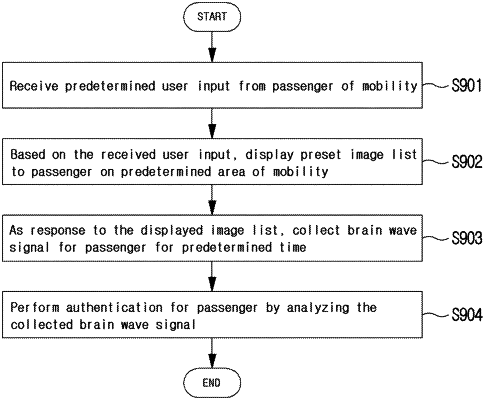| CPC G06F 21/32 (2013.01) [A61B 5/377 (2021.01); B60W 40/08 (2013.01); G06F 3/015 (2013.01); B60W 2040/0809 (2013.01)] | 20 Claims |

|
1. A mobility user authentication apparatus, the apparatus comprising:
a receiver configured to receive a predetermined user input from a passenger of a mobility;
a display configured to display a preset image list to the passenger on a predetermined area in the mobility based on the received user input, wherein the preset image list comprises an image having a predetermined relevance to the passenger and having relevance to processing functions of each brain area, and the predetermined relevance corresponds to a personal characteristic of the passenger;
a sensor configured to collect a brain wave signal for the passenger for a predetermined time as a response to the preset image list, wherein the brain wave signal for the passenger is a signal activated as a response to the image with the predetermined relevance having the personal characteristic of the passenger and the relevance to the processing functions of each brain area; and
a controller configured to perform authentication for the passenger by analyzing the collected brain wave signal, wherein the authentication is performed based on a similarity between a collected brain wave signal and a pre-stored brain wave signal for each passenger, the similarity being determined by a comparison with a predetermined threshold that varies according to the image, wherein a value of the predetermined threshold for the image having the predetermined relevance to the passenger is larger than a value of the predetermined threshold for an image having no predetermined relevance to the passenger.
|